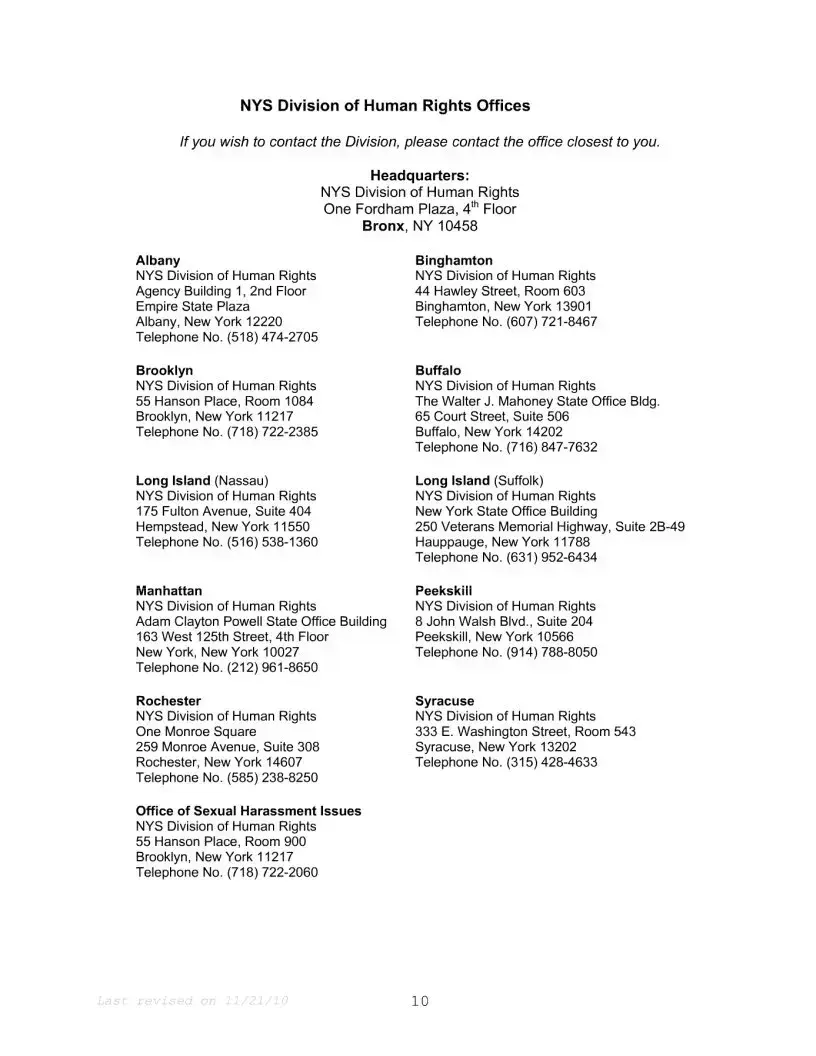The New York State Complaint Form, designed for lodging formal grievances, shares similarities with several other legal documents in purpose, structure, and use. One such similar document is the Civil Complaint Form, used across various jurisdictions to initiate a civil lawsuit. Like the NYS Complaint Form, it requires the complainant to provide detailed information about the plaintiff, defendant, and the nature of the legal dispute. Both forms play a crucial role in setting the judicial process in motion by documenting the allegations that give rise to the lawsuit.
Another document akin to the NYS Complaint Form is the Employment Discrimination Complaint Form. This form is specifically used for filing complaints related to workplace discrimination. Like the NYS version, this form necessitates the provision of detailed personal information, the specifics of the complaint, and the legal basis for the grievance. Both forms serve as an essential first step in seeking remedial action or litigation for the alleged injustices, thus facilitating a structured pathway for addressing discrimination in the workplace.
The Patient Complaint Form found in healthcare settings also mirrors the structure and intent of the NYS Complaint Form. It is designed for patients to report issues related to their care, ranging from medical malpractice to concerns about the health facility's conditions. Both forms require detailed descriptions of the complaint, emphasizing the importance of accountability and the need for a formal process to address grievances within specialized domains such as healthcare.
The Consumer Complaint Form, often used by state agencies or consumer protection boards, is another document that shares similarities with the NYS Complaint Form. This document allows consumers to report unsatisfactory experiences with products or services. Like the NYS form, it collects comprehensive details about the complaint, including parties involved and the nature of the complaint, underscoring the consumer’s right to seek resolution or compensation.
The Legal Malpractice Complaint Form is another similar document, specifically for grievances against legal professionals. It demands the complainant to outline the legal representation issue, including inadequate services or breach of duty. This requirement of specifying the conduct that allegedly constitutes malpractice parallels the detailed complaint descriptions required in the NYS Complaint Form, highlighting the procedural step towards resolving issues of professional responsibility.
An Academic Complaint Form, utilized within educational institutions, also reflects similarities with the NYS Complaint Form. It is designed for students to report issues related to academic misconduct or grievances against faculty or administrative actions. Both forms facilitate a formal mechanism for raising concerns, requiring detailed descriptions of the incidents and providing a procedural framework for addressing and resolving such complaints within the institution.
Lastly, the Housing Discrimination Complaint Form, which allows tenants to report unfair treatment or discrimination by landlords or housing authorities, is similar in function and structure to the NYS Complaint Form. Both documents are critical in offering individuals a formal avenue to seek justice and resolution to their grievances, enforcing legal protections against discrimination and promoting fair treatment within the housing sector.









